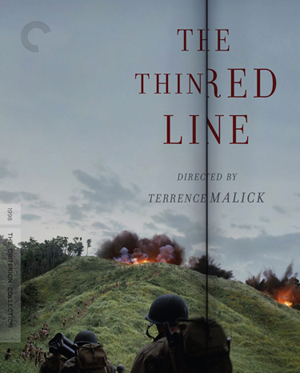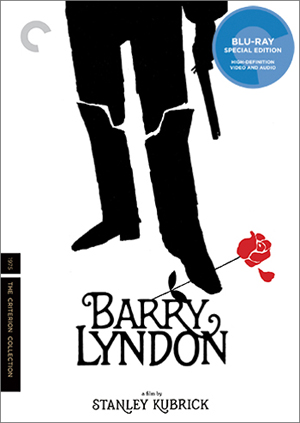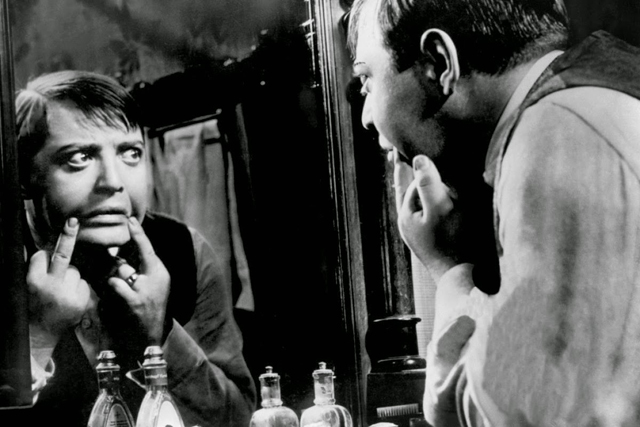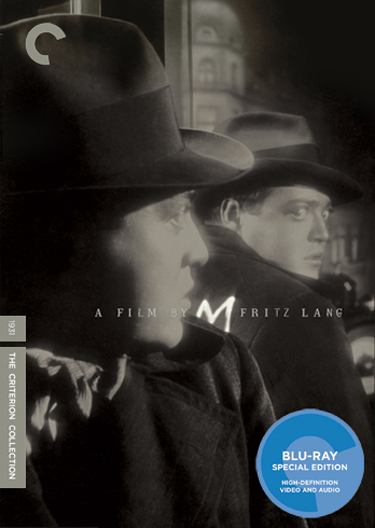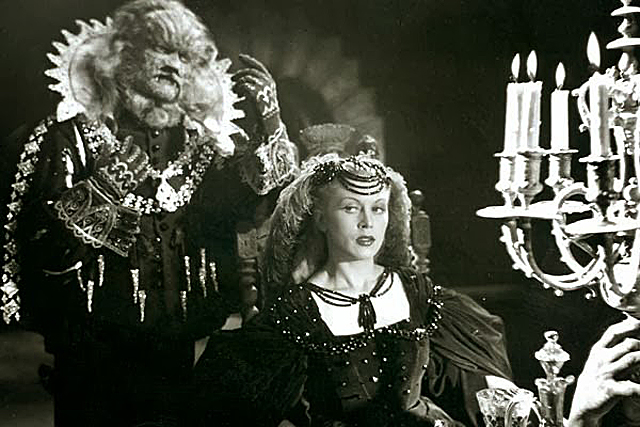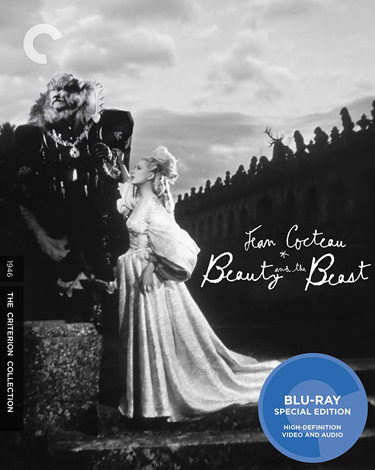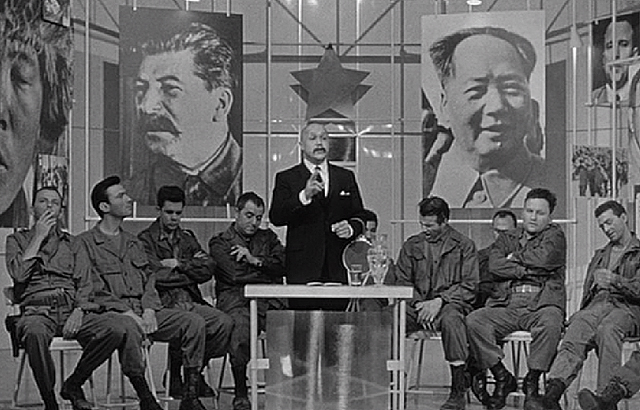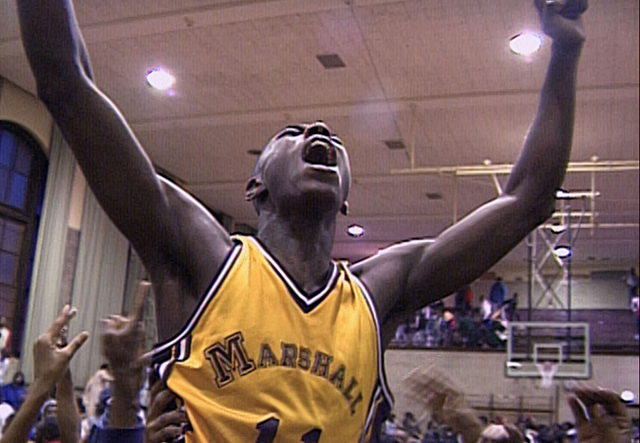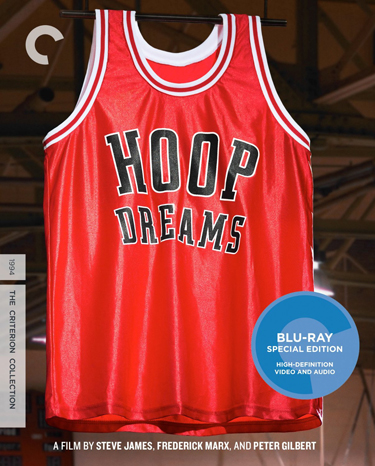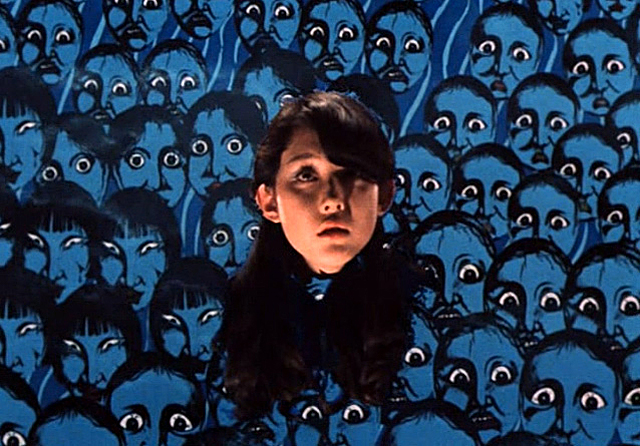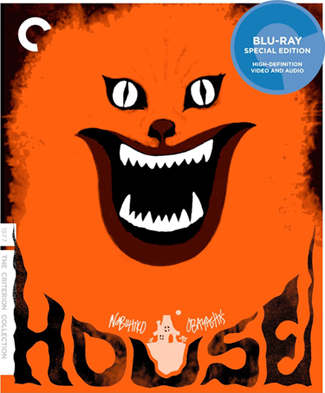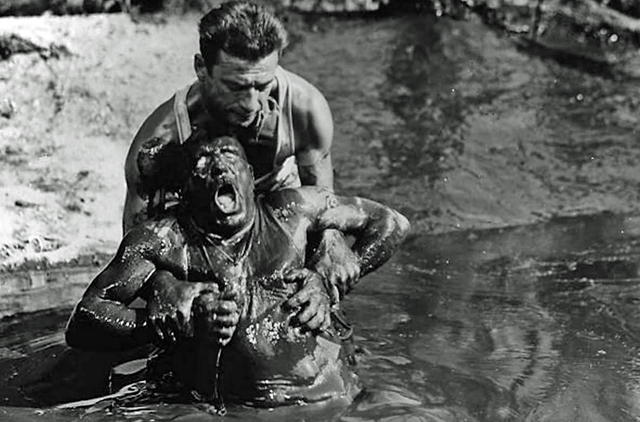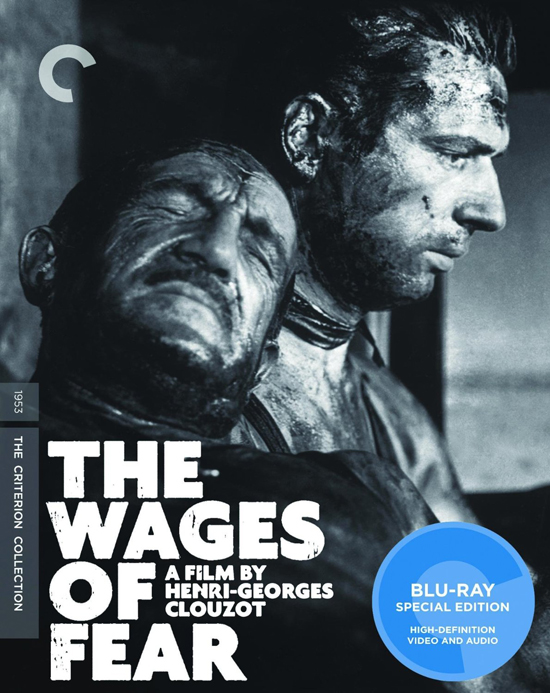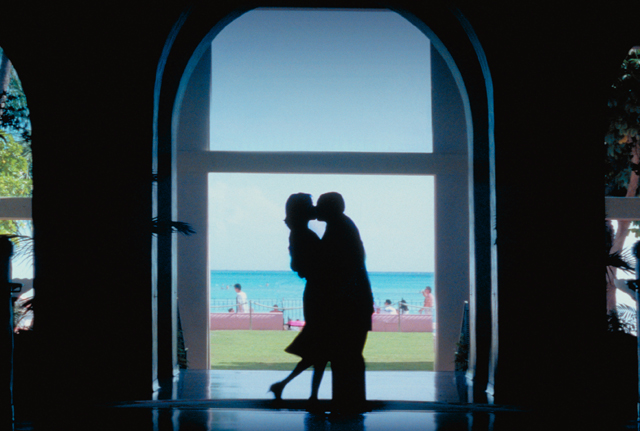
February is always marked with a aura of romanticism, mainly due to it being the month of Valentine’s Day. Typically, this is when movie studios dump a whole bunch of sweet, romantic comedies into theaters, in the hopes of cashing in on all those couples seeking a movie to watch on their Valentines dates. Strangely enough, however, it is a genre that the Criterion Collection has largely avoided for the most part. Sure there are romantic films throughout their collection, but they are usually present due to being a part of a filmmaker’s larger body of work. Because of this, you have romantic movies that span a whole swath of other subgenres in cinema, which goes a long way in helping to broaden the definition of cinematic romance beyond what we the viewers are used to. There are classic Hollywood romances in there like Charlie Chaplin’s City Lights (1931, Spine #680) and David Lean’s Brief Encounter (1945, #76). There are also plenty of international romantic movies represented like Max Ophuls’ The Earrings of Madame de… (1953, #445) and Roger Vadim’s And God Created Woman (1956, #77). You also have interesting explorations into other romantic relationships, like the interracial one from Rainer Werner Fassbender’s Ali: Fear Eats The Soul (1974, #198), and the same-sex one in Andrew Haigh’s Weekend (2011, #622). But, the romantic comedy genre as we know it from Hollywood is largely unrepresented, unless you count the few from early Hollywood in the collection. The only movie in the Criterion Collection that comes close to being a representation of this genre is a weird little film from one of today’s most daring and admired artists in film-making; Paul Thomas Anderson’s Punch-Drunk Love (2002). But, it’s inclusion in the Criterion Collection makes a lot of sense because not only is it a marvelously surreal film that fits well amongst all of Criterion’s other cinematic oddities, but also because when stacked up to others within it’s genre, it stands out as probably one of the greatest romantic comedies of all time; if not the best.
The movie also holds a somewhat peculiar place within the Criterion Collection. It is the one and only (and probably will forever be) movie in the Collection to star actor Adam Sandler. Yes, the much maligned star of movies like Jack and Jill (2011) Grown Ups 2 (2013), and Pixels (2015) actually made a movie deemed worthy enough to be included in the Criterion Collection. But, before you dismiss Criterion for that, keep in mind that if there ever was a movie of his good enough to be included, it would be this one. Punch-Drunk Love is first and foremost a Paul Thomas Anderson movie, with all the same quirks and dark edges that has made him one of the most celebrated filmmakers of his time. Made after two back to back hits that firmly put him on the map (1997’s Boogie Nights and 1999’s Magnolia), Punch-Drunk almost feels like it was made on a dare. After some critics complained that his movies were too long and lacked any warmth, he seemed set to prove the naysayers wrong and he made a short, 90 minute romantic comedy, and to show even more that he could make the impossible possible, he cast Adam Sandler as his lead. And the remarkable thing is that he did manage to get a sensitive, down to earth performance out of the goofball performer. Dispensing with all the silly voices and the obnoxious wisecracks, we actually see a side of Adam Sandler in this film that we never really thought was possible. It’s clear that Anderson was inspired heavily by a young Dustin Hoffman from films like The Graduate (1967) when he wrote the character, and Sandler fit the mold he wanted better than anyone else. This would prove to be one of the unlikeliest pairings in cinema history, but it’s one that sure enough resulted in absolute magic on screen, and made Punch-Drunk Love a career highlight for both (especially Sandler).
Punch-Drunk Love tells the story of Barry Egan (Adam Sandler), a troubled supplier of novelty toilet plungers, which he sells out of a warehouse with his business partner, Lance (Luis Guzman). Though he runs his own business, he lives a solitary life, usually spending much of his free time taking advantage of an oversight in a free air miles giveaway by saving single serve pudding cup lids. In addition, he suffers from rage issues that manifest every time he is in the company of his over-bearing sisters. One day, he runs into an acquaintance of one of his sisters named Lena (Emily Watson). He can see that Lena has taken an interest in him, which he also shares in her, but his insecurities prevent him from taking the initiative and telling her how he really feels. In a moment of desperate solitude, Barry decides to try calling a sex hotline, where he awkwardly shares an exchange with a girl on the other line called “Georgia.” In time, Barry comes more and more out of his shell and begins to grow closer to Lena, who keeps re-appearing in his life. The two find themselves falling deeply in love, with Barry finally opening up and putting aside the childish routines that had kept him isolated. However, their harmonious courtship is interrupted once the “hotline” girl calls Barry up once again, in the attempt to shake him down for more money. It turns out, she belongs to a syndicate run by a ruthless con artist named Dean Trumbell (Phillip Seymour Hoffman), who is set on getting from Barry what he feels is owed to him, no matter what the cost. At this point, Barry must confront the mistakes he’s made in his past, if he is ever to have a future with Lena, and find out if love can conquer all in the end; even when it means conquering the monster within one’s self.
All the hallmarks of a great Paul Thomas Anderson film are here in this movie, but it also fits very nicely within the genre of romantic comedy as well. Chief among the movie’s greatest strengths is the chemistry between Sandler and Watson. You wouldn’t have never thought that Happy Gilmore himself would have been capable of something tender and heartfelt before, but he manages to do it here. He plays the character very subtly in comparison to all the other characters he’s been known for, making him very close to a normal human being. Very much in the way the director wanted, Sandler’s Barry is very Hoffman-esque; quirky and broad when he needs to be, but with a vulnerability that helps to ground him to Earth. He’s certainly the most relatable character that Sandler has ever played, and it certainly shows that he has more range than we would have ever thought. But most importantly, he makes it believable that someone like Emily Watson’s character would be attracted to him. Paul Thomas Anderson devotes the majority of his movie to humanizing his characters and building up their mutual appreciation for one another. They are typical of the flawed protagonists that Anderson likes to build his movies around, but they also come across as genuine people too. Anderson loves finding the beauty in the mundane as well, and seeing these two (for lack of a better word) outcasts finding mutual admiration together helps to build into this wonderful romance throughout the movie. The remainder of the movie contains the usual P. T. weirdness, especially in some of the sleazy supporting characters. The late Phillip Seymour Hoffman is especially enjoyable in his brief moments as the morally corrupt antagonist, and the movie builds to a hilariously anti-climatic confrontation between him and Sandler. You can definitely see that if the love story didn’t work here, there would be no movie worth seeing, and it’s all the more remarkable that Anderson took the gamble he did in giving that responsibility to Sandler in the first place.
The movie is also a stunning visual achievement. For one thing, Anderson returns to his favorite source of inspiration from his earliest films; the City of Los Angeles. In particular, he devotes a lot of attention to capturing the look and feel of the San Fernando Valley. Now, speaking as someone who lives in the Valley, and has for the last 8 years, this is not the first place you’d expect to set a fairy-tale romance. And yet, the way that Anderson (who was himself born and raised in the Valley; Studio City to be exact) portrays the setting in the movie almost gives it this air of romanticism that really does not exist. From the early dawn car crash of the opening scene, to the magic hour sunset of the movie’s finale, Anderson finds the inherent beauty that exists in these characters lives, and captures it so elegantly in the lens of his camera, even if it’s something as drab as an empty warehouse in the industrial side of Woodland Hills. I kind of love that about the movie, which makes it all the more personally enriching for me since I actually live around many of the places that are shown in the movie. I think I have even shopped at the grocery store where Sandler picks up his cups of pudding in the film. But, that’s not to say that Anderson doesn’t also indulge his audience with some exotic locales as well. There’s a point in the movie where Barry and Lena reconnect in Hawaii, and their reunion at the Hotel leads to the movie’s most unforgettable shot. Silhouetted in an archway facing the beach, the two embrace in a passionate kiss, with passersby criss-crossing in front of the frame. It’s an absolutely stunning moment of cinematography, choreographed perfectly with the peculiar choice of a song called, “He Needs Me” from, of all places, the movie Popeye (1980), sung by Shelley Duvall. It’s at that point that Anderson’s romantic comedy crosses into the sublime, and makes this one of the absolute best of it’s kind.
Criterion didn’t have too much trouble making this blu-ray edition as spectacular as it could possibly be. Anderson, a purist when it comes to shooting on film, personally supervised the digital transfer for this edition, sourcing it from the film’s original 35 mm inter-positive. With the director’s involvement, there’s no question that this blu-ray perfectly replicates the original theatrical look of the movie. The colors are vibrant and the presence of film grain is also pleasant to see on a movie that’s still not too old. The black and white levels also make a large difference, and it’s good to see them retained very well here. It’s especially important when taking that amazing silouette shot from the archway I mentioned before. If the balance between the dark shadows and the light background didn’t feel natural, it would have thrown off the artistry of the moment. Thankfully, everything is lit, colored and sharpened to the best possible degree. And like most of Anderon’s earlier films, it makes great use of the widescreen format. Part of the fun of the movie is seeing the kind of absurd things that the director can throw in on the edge of the frame, which includes some of the movie’s most hilarious sight gags. It’s strange that Anderson has more recently abandoned the wider frame in his last couple films like Phantom Thread (2017), Inherent Vice (2014) and The Master (2012), all shot in the 1.85:1 aspect ratio. They are still beautiful movies to be sure, but Punch-Drunk Love shows just how far he can push his visual artistry when the screen is at it’s fullest. The surround sound track is of course reference quality, as most newer films are, and it compliments the high definition picture splendidly. On the visual and aural ends of the presentation, this movie again lives up to Criterion’s naturally high standards.
Though P. T. Anderson does gratefully involve himself in giving his movie the best possible home video presentation, he is however less involved in the development of the extra features. Indeed, very few of his movies ever reach the video aisle with a wealthy sampling of bonus features. Criterion does however try to fill in the gaps as best they can. Most prominent is a fascinating behind the scenes featurette made during the filming of the movie called Blossoms & Blood. It’s interesting because it allows us to see Anderson at work on the set, and most interestingly, him working with Adam Sandler. It’s clear that Sandler was very content working this time with a challenging director, and watching him take a different kind of direction is fascinating to watch. There is a bunch of material related to the film’s soundtrack, which was written by Jon Brion. We first have a new one on one interview with Brion, who discusses working with Anderson and how he found the soundscape for this particular story. Then there is a collection of behind the scenes clips of Brion at the soundtrack’s recording sessions. Both do a fairly good job of breaking down the composer’s method and showing him hard at work, contributing to what we hear in the final film. Another feature discusses the artwork of Jeremy Blake, which Anderson uses in the background of several scenes in the movie. A conversation between curators Michael Connor and Lia Gangitano is here where they discuss the artwork in the movie, and a separate gallery is available for us to see the artwork itself. The are interesting deleted scenes, parody commercials not used in the movie featuring Hoffman’s “Mattress Man,” and even some untouched Scopitones, which were used for the film’s title sequence. Also of note is the full video of the press conference for the film’s Cannes Film Festival premiere, which again is something you would never have seen Adam Sandler be a part of before. Even with the minimal involvement of the film’s director, Punch-Drunk Love still has plenty of interesting bonus features thanks to the commendable efforts of Criterion.
Punch-Drunk Love may not be everybody’s ideal for a romantic comedy; especially for those more used to the more commercial style that Hollywood puts out. But, it still fits very much into the mold of that genre and in fact does many of it much better. It’s extremely funny, whimsical at times, and has a genuine heart at it’s center. And most importantly, the couple at it’s center has genuine chemistry. This is made all the more remarkable given that it is Adam Sandler who stars in this. Sandler had never been challenged like this before as an actor, and it is thrilling to see him rise to the challenge, and show that he indeed was capable of giving a captivating performance. Sadly, he has spent most of his career thereafter slumming it in the predictable cornball roles that he started his career on. There are moments when we do see him try a little harder, such as in movies like Funny People (2009), Men, Women and Children (2014) and The Meyerowitz Stories (New and Selected) (2017), but they come few and far between. To this day, Punch-Drunk Love is the screen performance that he has given, and it should be a calling card for every film director out there who believes that Adam Sandler might be the right fit for their film. He has it in him, it’s just that too many of us are used to seeing the less subtle side of Adam Sandler. Still, it is kind of a subversive delight to see one of his movies here in the Criterion Collection, especially given that it’s one of the rare romantic comedies represented in the library. For anyone looking for something light, passionate, and just all around enchanting, than this is the perfect movie to watch this Valentine’s Day. Watching Sandler and Emily Watson’s on screen chemistry will warm your hear and Paul Thomas Anderson’s surreal direction will leave a powerful spell on you as you take in the simple but enriching visuals of romance in the most unexpected of places. And, as it stands from there, that’s that.

